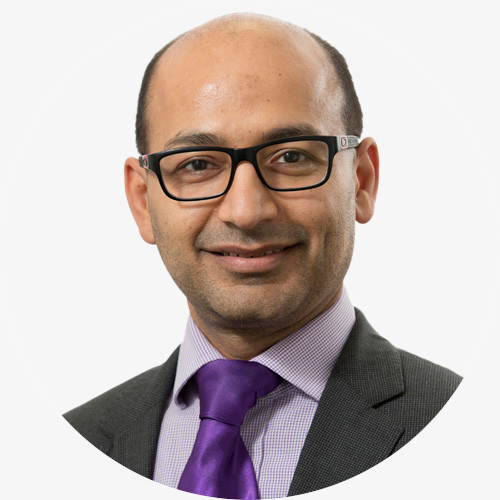
Shoulder Replacement Surgery
Also called ‘shoulder arthroplasty’, shoulder replacement surgery is a procedure used to treat very damaged shoulder joints. It is usually recommended as a final treatment after conservative treatments – such as pain medication and physiotherapy – have failed. Orthopaedics SA surgeons are highly trained in providing both anatomical and reverse shoulder replacements.
There are two main types of shoulder joint replacement – anatomical and reverse.
Anatomical shoulder joint replacements mimic the ball-and-socket structure of your natural shoulder. They replace the diseased parts of your bone with metal parts that look more or less the same as your shoulder bone, save for being made of metal. Anatomical joint replacements can also be partial or total – if only one part of the shoulder joint is damaged, your surgeon may recommend replacing only the damage part and leaving the rest intact.
Reverse shoulder joint replacements flip the structure around. The surgeon attaches a ball-shaped piece to your shoulder socket, and a cup-shaped piece to the top of your arm bone. Doing so changes which muscles move your shoulder, so reverse shoulder replacement surgery can help people who have lost shoulder strength due to a rotator cuff injury.
Shoulder joint replacement is not often performed as a first line of treatment. Your Orthopaedics SA surgeon will discuss all available options with you and help you decide on which treatment best suits your needs.
Generally speaking, you may need a shoulder replacement if:
· You have prolonged pain
· Non-operative treatments have not effectively relieved your pain enough for day-to-day activities
· Your shoulder joint is very damaged
· Your shoulder is unlikely to improve with a smaller surgery, such as arthroscopic debridement.
A shoulder replacement is a major surgery which is done in a hospital. Before it is performed, you will be placed under a general anaesthetic. Your Orthopaedics SA surgeon will ensure that you are fully unconscious and cannot feel pain before beginning the surgery.
Both types of shoulder joint replacement are done through an incision in the front of your shoulder. Your surgeon will make a long cut which curves along your deltoid muscle, then use a retractor tool to pull the muscles aside and expose your shoulder bone.
Once the bone is exposed, your surgeon uses a saw tool to cut away the shoulder’s damaged section and shape the healthy bone so that the implant will fit with it well. The implant is then secured in place with bone cement, and the surgeon tests your shoulder joint to ensure it moves correctly. After making any necessary adjustments, our surgeon closes the wound with sutures and places a sterile dressing over it.
You will usually wake up with a sling on your arm, 1-2 hours after you went into surgery. A nurse will observe you while in the recovery room and you will be moved to a ward shortly afterwards.
· You do not have severe joint damage
· You can’t go under a general anaesthetic
· You have weak or brittle bones that can’t support an implant
· Your deltoid muscle has poor function
· You have an active infection in your body
If you have one or more of the above conditions, your Orthopaedics SA surgeon will discuss available treatment options with you. They may recommend working to fix other health conditions which impact your suitability, or may suggest a different procedure to alleviate your shoulder pain.
Most patients can go back to their day-to-day activities within 3-4 weeks. If you play sports that need a lot of shoulder function – like golf or tennis – you may need to wait a bit longer before getting back to your game.
The recovery process is different for everyone, and your surgeon will guide you through it with individualised advice. The information provided below is general – always follow your own surgeon’s advice to maximise your recovery’s effectiveness.
Most people stay in the hospital for 2-3 days after a shoulder replacement. Your orthopaedic team will discharge you from the hospital with your arm in a sling, a script for pain relieving medications, and instructions for rehabilitating exercises.
Take your pain medication as directed by your doctor, rather than waiting until you feel sore. Pain is much more difficult to manage when it is already out of control, so taking pain medication consistently will improve your overall comfort.
You will need to wear the sling for up to two weeks, during which time you may need help with activities such as preparing food and dressing yourself. You may wish to have a friend or family member stay with you during this time.
Avoid sleeping on your shoulder immediately after your shoulder joint replacement. Wear your sling while sleeping, and sleep on an incline if you can (raising your head and shoulders above your torso, as if you were laying back in a recliner). Some patients find that placing a small pillow between their shoulder and torso helps promote comfort while they sleep.
It’s important to remember that even though most people see drastic improvements after a shoulder replacement surgery, your shoulder will likely not feel the same as it did before. You will likely not have the exact same range of movement as you did previously, but will have much less pain and possibly better arm strength than before. Your Orthopaedics SA surgeon will discuss your likely outcomes with you before surgery.
Like all machinery, shoulder joint replacements have a limited life span. Most last 15-20 years or more, so you generally will not need to worry about having a revision done in the near future (especially if you have a shoulder replacement done later in life). However, some patients experience fractures around the implant site (periprosthetic fractures) or find the prosthetic loosening after a period, which may require more surgery to correct.
Shoulder replacements are performed because they’re considered effective at relieving pain and helping people lead more comfortable lives. A 2021 study found that 10 years after getting their shoulder replacement surgery, 80% of patients surveyed still felt satisfied with their surgery and 95% would have the surgery again.
Other studies have found that most patients who regret having joint replacement surgery do so because they had it too early or weren’t the best candidates for it in the first place. That’s why Orthopaedics SA surgeons commit to evaluating your lifestyle and needs before performing any kind of shoulder surgery – they will not recommend a course of treatment that they do not feel is suitable for you.
If you live in South Australia, ask your GP for a referral to Orthopaedics SA. Our team will match you with a specialising shoulder surgeon who can assess your suitability for a shoulder replacement.
Book an appointment with our orthopaedic specialists
Book an appointment






